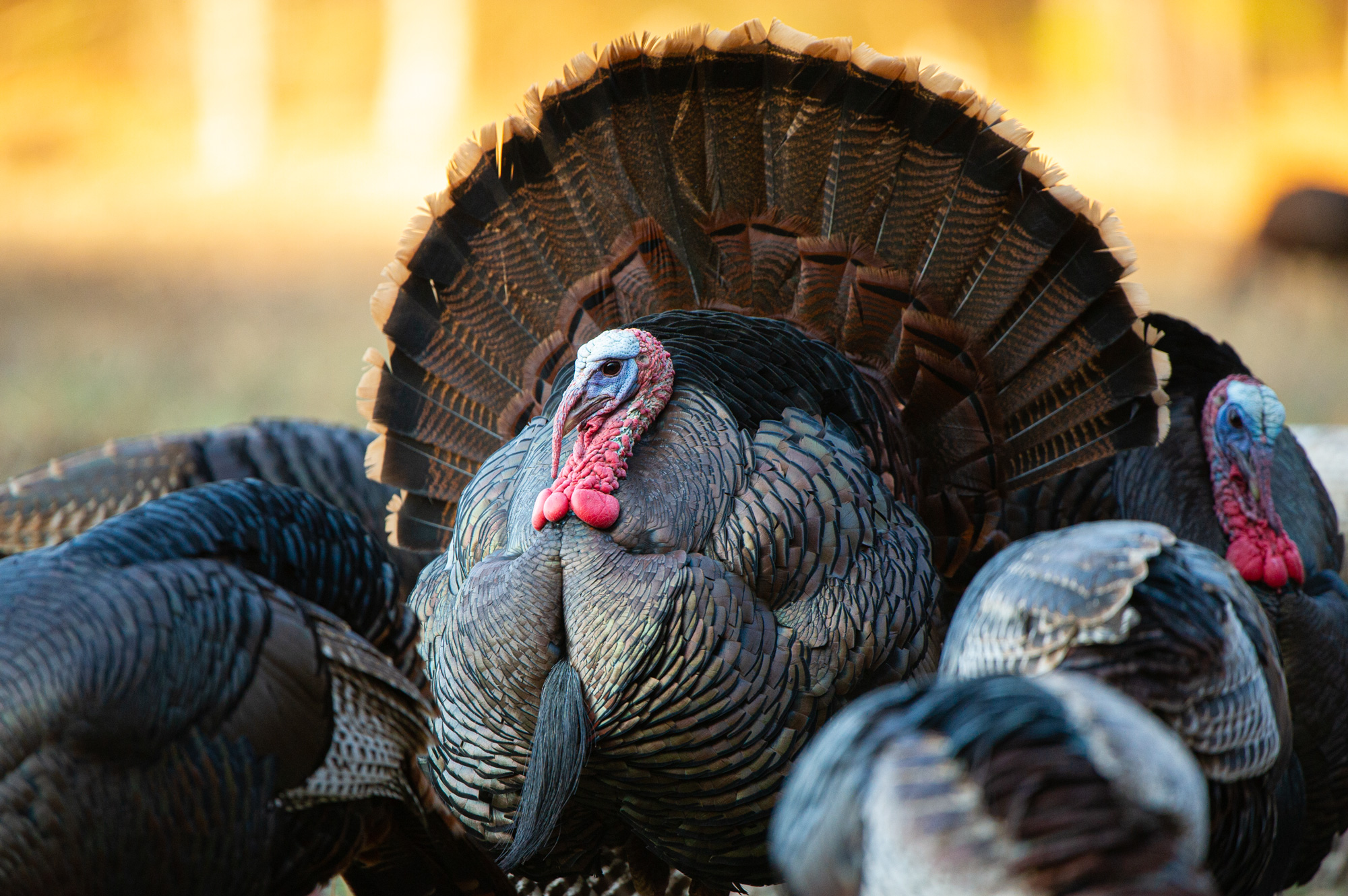Wild Turkey Appearances
Get the 411 on each all the wild turkey species and subspecies
Wild turkeys are among the most popular game animals in the world.
There are two species of the wild turkey, the American wild turkey and the Ocellated wild turkey. The American wild turkey, which is the more common of the two is comprised of five subspecies, each displaying different physical and behavioral characteristics that define them. The Ocellated turkey is native to Central America.
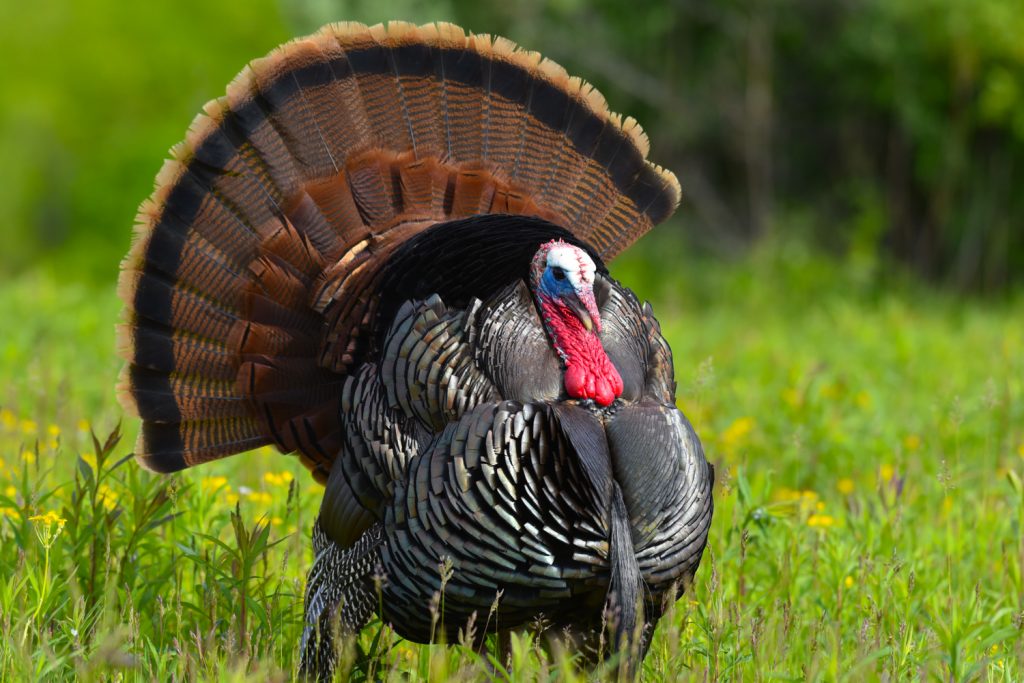
Eastern wild turkey
Characteristics
- Chestnut-brown tips on tail feathers
- White and black bars on the wings
- Adult males weigh 18 to 30 pounds
- Adult females weigh 8 to 12 pounds
- Very strong gobbles (strongest gobbles of all subspecies)
- Very long beards (longest beards of all subspecies)
- Second to the Osceola in difficulty of calling in
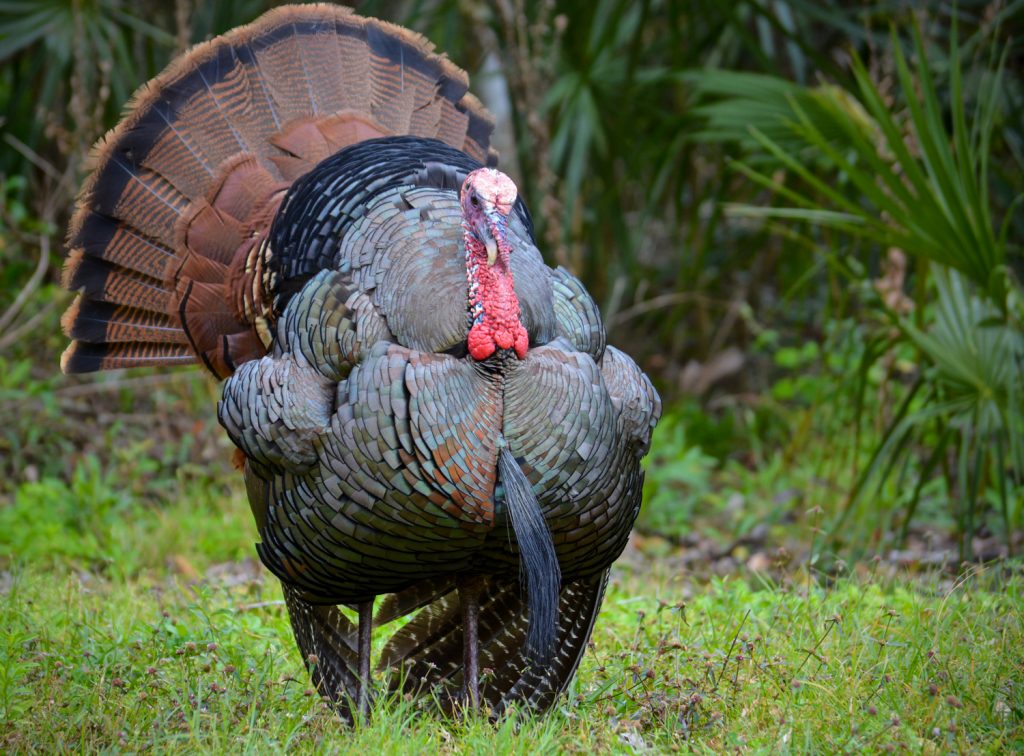
Florida (Osceola) wild turkey
Characteristics
- Dark-brown tips on tail feathers
- Mostly black wings with very small white bands
- Adult males weigh approximately 20 pounds
- Adult females weigh 8 to 12 pounds
- Long legs
- Strong gobbles
- Very long spurs
- Shorter beard-lengths than Easterns on average
- Considered the toughest species to call in
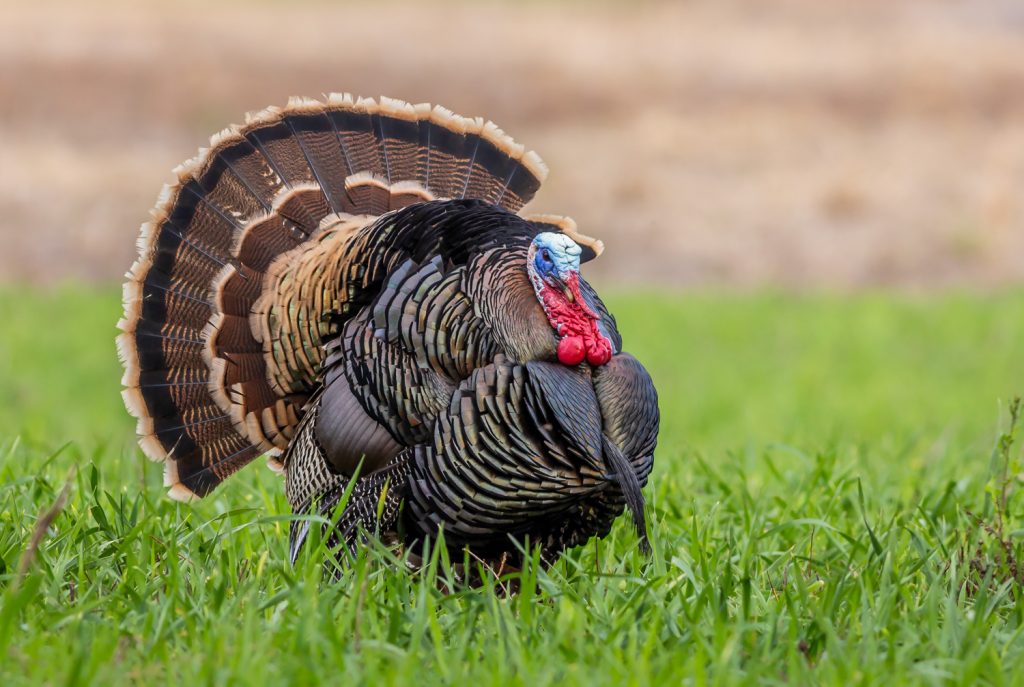
Rio Grande wild turkey
Characteristics
- Tan-colored tips on tail feathers
- Same amount of black and white barring on wings
- Adult males weigh approximately 20 pounds on average
- Adult females weigh 8 to 12 pounds
- Moderate gobbles
- Moderate beard-lengths
- Moderate spur-lengths
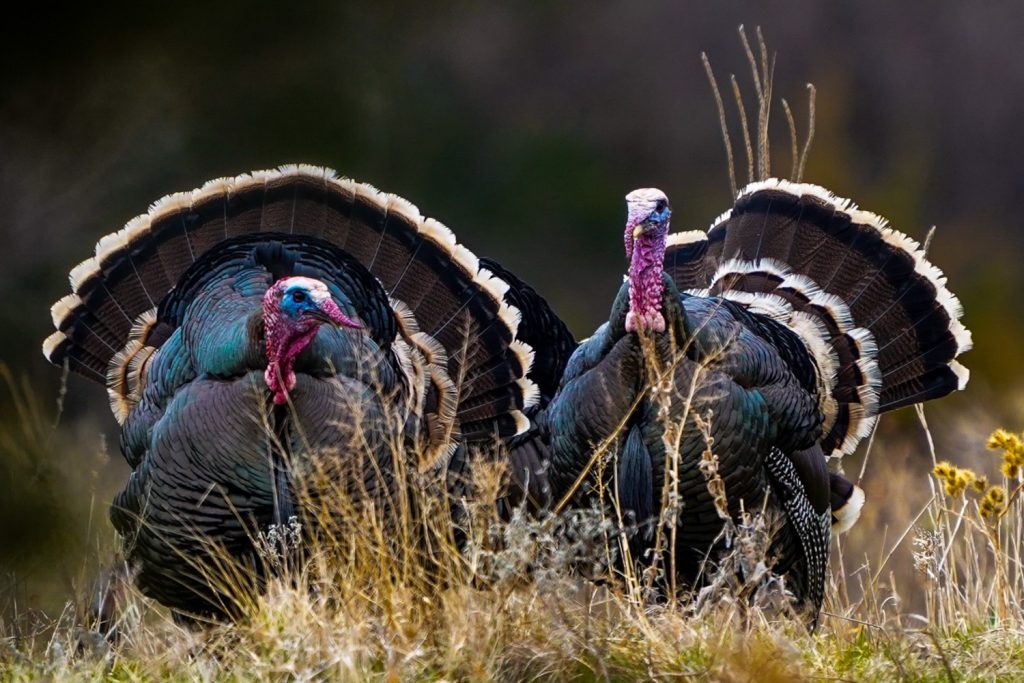
Merriam’s wild turkey
Characteristics
- Light tips on tail feathers and upper tail coverts (rump feathers), buff to white
- More white and less black on wings
- Adult males weigh 18 to 30 pounds
- Adult females weigh 8 to 12 pounds
- Weakest gobbles of all subspecies
- Short to moderate beard length
- Short spurs
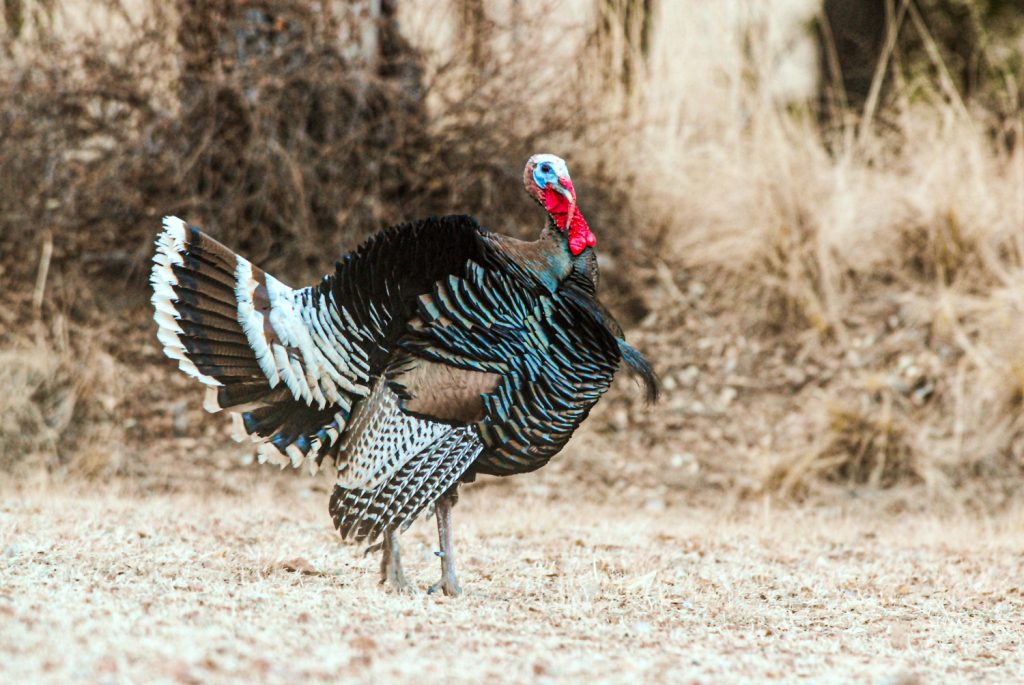
Gould’s wild turkey
Characteristics
- Long legs similar to the Osceola
- Snow-white tips on tail feathers and upper tail coverts
- Wings are moderate in coloration
- Adult males weigh 18 to 30 pounds
- Adult females weigh 12 to 14 pounds
- Moderate gobbles
- Moderate beard-lengths
- Shortest spurs of all subspecies
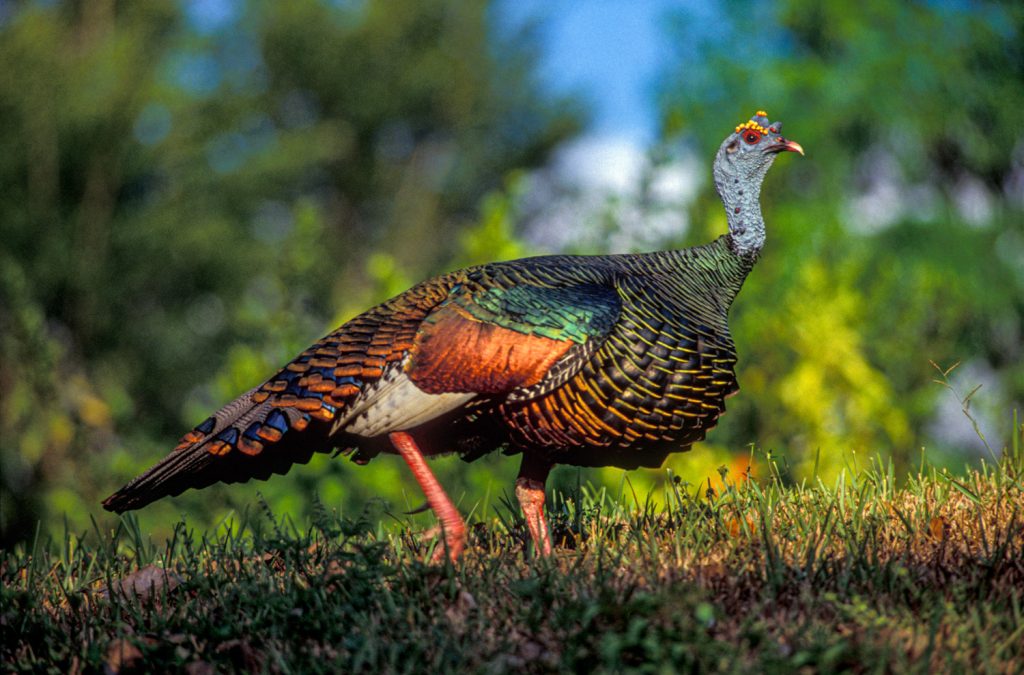
Ocellated turkey
Characteristics
- Rainbow-like iridescent feathering
- Grey tail feathers with blue and gold tips
- White and black wings
- Adult Males weigh 11 to 12 pounds
- Adult females weigh 6 to 7 pounds
- A unique, high-pitched "gobble" preceded by a hollow drumming sound
- No beard
- Very long spurs

Wild Turkey Oddities: Feathers
Turkey oddities are the result of genetic variations that cause one or more turkeys in a flock to differ from the rest. These genetic differences may be nature's way of improving a species, but that isn't always the case.
Each subspecies has highly visible feathers, which match the colors of their habitat and provide a better chance of survival.
A good example is to look at each subspecies of wild turkey's rump feathers and tips of their tail feathers. Eastern and Osceola turkeys, in the heavily wooded areas of the East and South show relatively dark, chestnut colors. Rio Grande turkeys have buff tail feather tips that match the plains and shrub areas they inhabit. Merriam's turkeys, found primarily in snowy mountain areas, have rump feathers and tail feather tips that are nearly white.
Individual differences in feather coloration are probably the most reported oddities. The late James Kazmierski and his son, Steven, compiled a detailed article titled, "Turkey Plumage: Color and Composition," in which they state that the genetics responsible for these variations have not been well documented. The Kazmierski's list eight plumage types found in domestic turkeys. They go on to speculate that since domestic turkeys originated from wild stock, the genes responsible for such plumage types are probably found in wild populations as well.
One of the most common color variations is the "smoky gray" color phase. Turkeys with this variation appear white from a distance. Upon closer examination, however, it is obvious that these birds' appearance is due to a loss of brown or bronze pigments while the black areas of the feathers remain. Every year, the NWTF receives reports of turkeys in a smoky gray color phase, and many turkey hunters have seen at least one during their time in their field. This recessive trait seems to occur more frequently among hens, but is still occasionally seen in gobblers.
While this trait is probably detrimental to survival--it makes the turkey more visible--some smoky gray wild turkeys may survive for several years. One smoky gray hen in Georgia was observed with a normal brood of poults each spring for five years.
Melanistic (black) and erythristic (red) color variations also are reported each year, but are not as common as the smoky gray phase. Many of these turkeys are striking in appearance and stand out visibly when seen among flocks of normal looking wild turkeys.
The least common color variation is complete albinism, or the total lack of color pigments. True albinos are seldom found among wild turkeys.
Most hunters see color variations for the first time and think that the condition is a result of crossbreeding with a domestic turkey. Many wildlife biologists used to think the same thing. But, these differences occur regularly in flocks that have no contact with domestic turkeys.
Why are turkeys bald?
According to the study conducted by Richard Buchholz at the University of Florida called "Thermoregulatory Role of the Unfeathered Head and Neck in Male Wild Turkeys," there is a reason turkeys and other birds have bare heads.
The brightly colored, unfeathered heads and necks of male Wild Turkeys were generally thought to function in sexual selection. However, studies now suggest that uninsulated body regions may serve an important role in heat dissipation.
Nearly bald heads allow for better oxygen consumption, thermal conductance and cooling capacity. In other words, a turkey's body temperature is more easily regulated by the means of a bald head.
The loss of head and neck feathering in wild turkeys allow the species to take advantage of regions in time and space that previously were unexploitable due to the dangers of hyperthermia.
What's the purpose of...
...a beard?
The function of the wild turkey beard is not well understood but it is suspected to play a role in mate selection by the female. A longer beard signifies an older healthier male and thus a superior mate. Surprisingly, the beard is considered a modified type of feather.
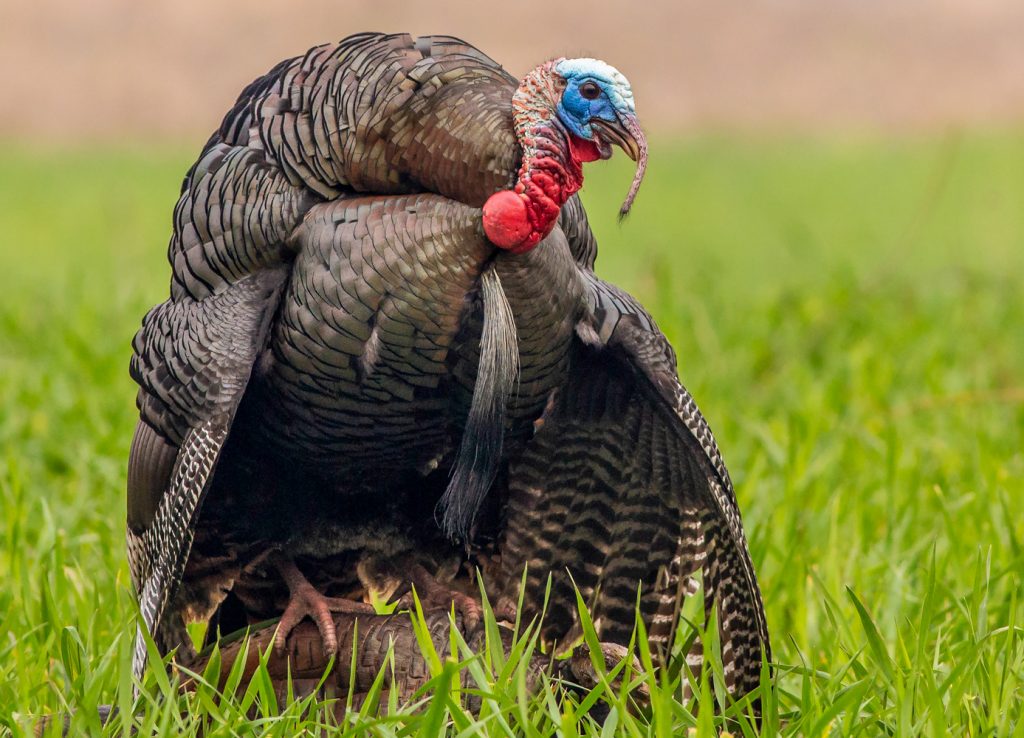
...a snood?
The snood functions in both intersexual and intrasexual selection. Female wild turkeys prefer to mate with long-snooded males, and during dyadic interactions, male turkeys defer to males with relatively longer snoods.
...caruncles?
The caruncles are thought to play a role in attracting a mate. The male wild turkey caruncles can become engorged with blood an turn vivid shades of red, white, or blue.
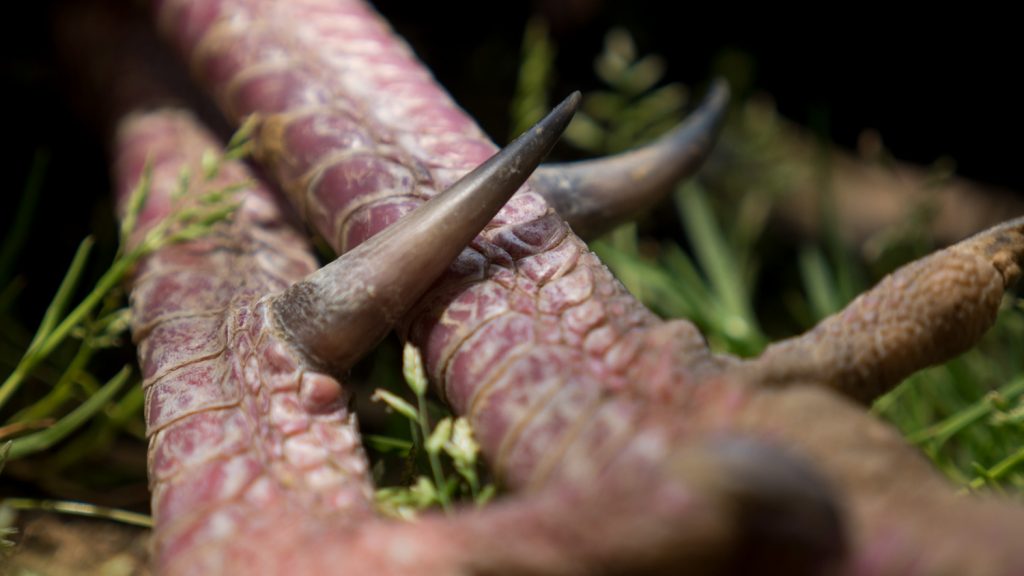
...spurs?
Spurs are used to establish dominance. Older more dominate wild turkeys have the longest and sharpest spurs. This generally allows them to fend off younger turkeys when vying for the right to breed. Both sexes are born with a small button spur, consisting of smooth, shiny keratin. The spur continues to grow soon after birth in male birds.
